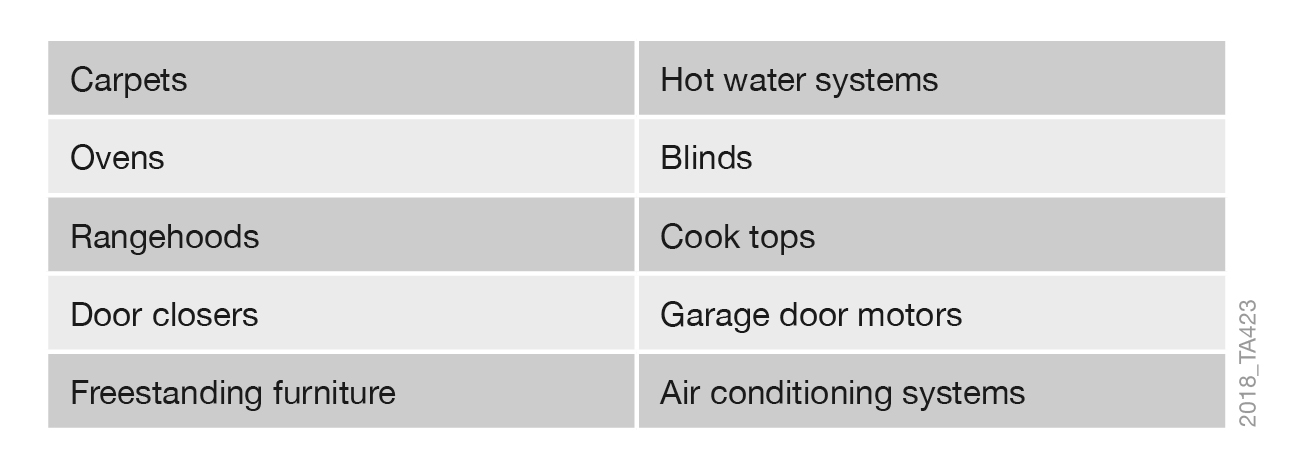12 frequently asked depreciation questions
Contact
12 frequently asked depreciation questions
BMT Tax Depreciation answers your most commonly asked depreciation questions.
BMT Tax Depreciation answers all your depreciation questions.
1. What is depreciation?
As a building gets older and items within it wear out, they depreciate in value. The Australian Taxation Office (ATO) allows property investors to claim a deduction relating to the building and fixtures it contains. Depreciation can be claimed by any owner of an income producing property. This deduction essentially reduces the investment property owner’s taxable income.
2. What is a depreciation schedule?
A depreciation schedule is a comprehensive report that outlines the depreciation deductions claimable by investment property owners on the property’s building structure and its fixtures and fittings within it.
Visit the BMT Tax Depreciation website.
A depreciation schedule, prepared by a specialist Quantity Surveying firm, such as BMT Tax Depreciation is one of the best ways that you can maximise the cash return from your investment property each financial year.
3. If a residential property was built before 1987 is it too old?
No, investment properties do not have to be new. Both new and old properties will attract some depreciation deductions. It is a common myth that older properties will attract no claim.
Previous year’s tax returns can also be adjusted. If a property owner has not maximised their depreciation deductions, the ATO allows investors to adjust the previous two financial years tax returns.
4. How does BMT calculate a building’s age?
The age of the building can be determined by obtaining council documents with dates pertaining to the original application approval date or the occupancy certificate date and final inspection date.
Visit the BMT Tax Depreciation website.
Your BMT Quantity Surveyor will conduct the relevant searches to accurately determine the age of a building. This includes historical council searches regarding lodged development applications, as well as occupancy certificates and certified final inspections.
5. What is the difference between plant and equipment and capital works?
Plant and equipment (division 40) assets are items that can be ‘easily’ removed from the property, as opposed to items that are permanently fixed to the structure of the building. Plant and equipment assets also include electronically or mechanically operated items, even though they may be fixed to the structure of the building.
Plant and equipment assets include, but are not limited to:
Image supplied by BMT
Capital works (division 43) is based on the historical construction costs of the building and includes such items as bricks, mortar, walls, flooring and wiring.
6. Why does the depreciation schedule last forty years?
The ATO has determined that any building eligible to claim the building write-off allowance has a maximum effective life of forty years from the date construction was completed. The owner can generally claim up to forty years depreciation on a brand new building, whereas the balance of the forty year period is claimable on an older property.
7. Can the building owner claim renovations that were completed by the previous owner?
Yes. Anything in the property that is part of a previous renovation will be estimated by our Quantity Surveyors and deductions calculated accordingly. This includes items which may not be so obvious, for example, new plumbing, waterproofing and electrical wiring.
Visit the BMT Tax Depreciation website.
For capital works improvements to qualify for the division 43 building write-off, they must have commenced construction within the qualifying dates.
8. How long will it take to get my schedule?
Once BMT Tax Depreciation has collected all of the details they need, it usually takes between five - seven days for their team to prepare your property’s BMT Tax Depreciation Schedule.
9. Do you inspect properties?
BMT inspects properties that a tax depreciation schedule is to be completed on. This ensures that BMT Tax Depreciation identify all assets and maximise the depreciation deductions available. This also ensures BMT's schedules are fully compliant with the guidelines set out by the Australian Institute of Quantity Surveyors (AIQS), the Royal Institute of Chartered Surveyors (RCIS) and that are required by the ATO.
10. Doesn’t my accountant take care of this?
BMT works with your Accountant to ensure that your depreciation claim is maximised each financial year for your investment property. The ATO states that Quantity Surveyors are one of the only recognised professions with the appropriate construction costing skills to estimate construction costs for depreciation purposes.
11. Who is qualified to estimate construction costs for depreciation purposes?
Quantity Surveyors are qualified under the tax legislation TR97/25 to estimate construction costs for depreciation purposes and are one of a few select professionals who specialise in providing depreciation schedules. Ensure a depreciation specialist like BMT is used to prepare a depreciation schedule.
12. Why is BMT Tax Depreciation my best choice for my depreciation schedule needs?
- BMT use their own staff Australia-wide, many firms use contractors. If an audit takes place and the ATO questions anything in the depreciation schedule, you will have peace of mind knowing BMT’s trained staff will be answering any queries.
- BMT provide a fee guarantee: if BMT can’t find double their fee worth of deductions in the first full financial year, BMT don’t charge for their services
- BMT have one fee across the whole of Australia - they don’t charge extra for regional areas and travel costs
- BMT’s Tax Depreciation Schedule is structured to allow you to recoup missed deductions for up to two years if you have not been maximising your deductions
- If you make additions to the property after you receive your depreciation schedule, BMT can update your depreciation schedule free of charge for the first addition
- BMT work with your Accountant and Property Manager to simplify the process for you
- BMT provide ongoing support.
To learn more about depreciation, visit the tax depreciation overview page on the BMT Tax Depreciation website.
This is a sponsored post.
Read more from BMT Tax Depreciation in the Real Estate Conversation:
Six depreciation questions to ask yourself this tax time
Are you eligible for depreciation deductions?
Residential versus commercial investing: how the depreciation rules change






